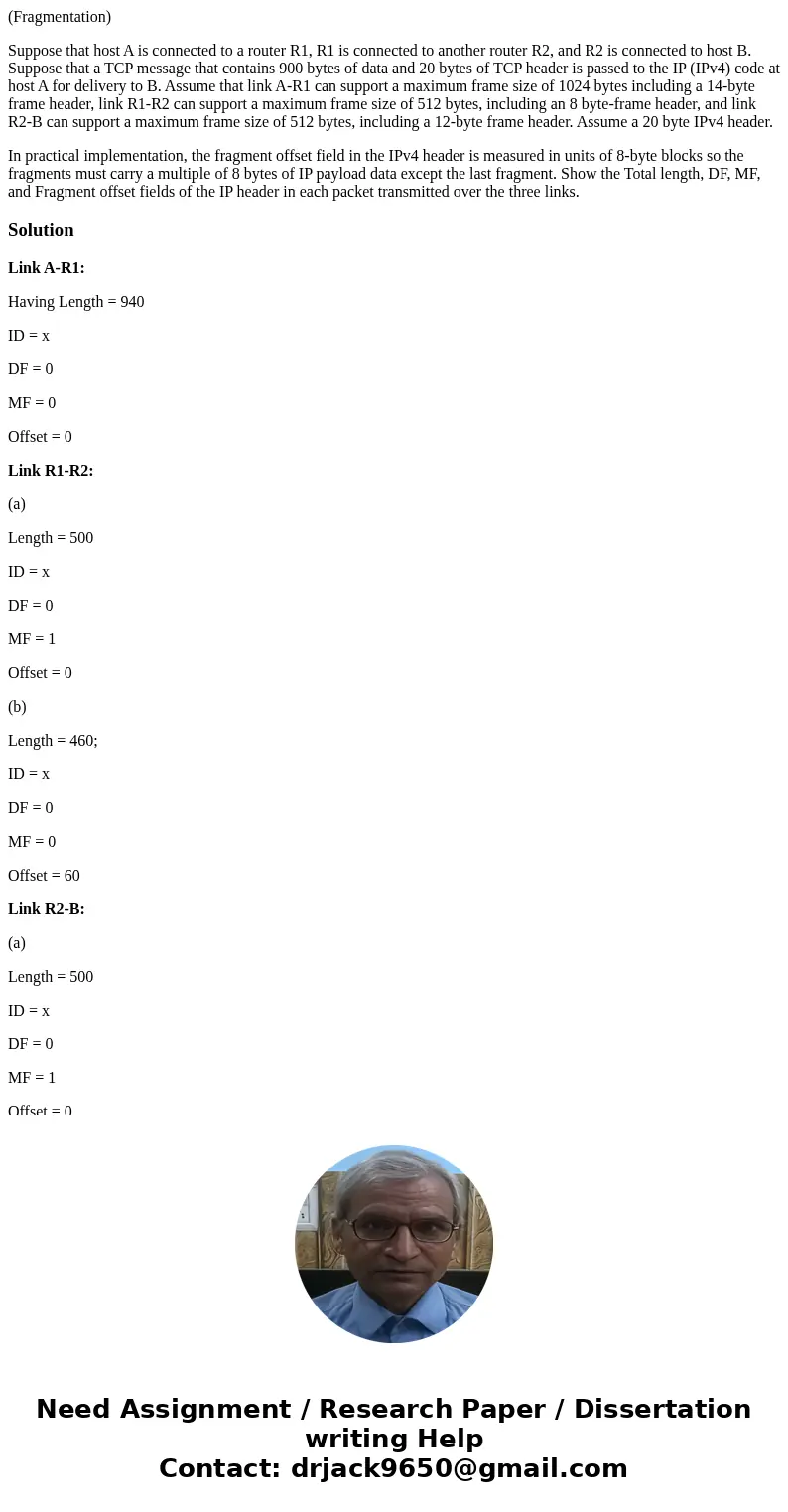Fragmentation Suppose that host A is connected to a router R
(Fragmentation)
Suppose that host A is connected to a router R1, R1 is connected to another router R2, and R2 is connected to host B. Suppose that a TCP message that contains 900 bytes of data and 20 bytes of TCP header is passed to the IP (IPv4) code at host A for delivery to B. Assume that link A-R1 can support a maximum frame size of 1024 bytes including a 14-byte frame header, link R1-R2 can support a maximum frame size of 512 bytes, including an 8 byte-frame header, and link R2-B can support a maximum frame size of 512 bytes, including a 12-byte frame header. Assume a 20 byte IPv4 header.
In practical implementation, the fragment offset field in the IPv4 header is measured in units of 8-byte blocks so the fragments must carry a multiple of 8 bytes of IP payload data except the last fragment. Show the Total length, DF, MF, and Fragment offset fields of the IP header in each packet transmitted over the three links.
Solution
Link A-R1:
Having Length = 940
ID = x
DF = 0
MF = 0
Offset = 0
Link R1-R2:
(a)
Length = 500
ID = x
DF = 0
MF = 1
Offset = 0
(b)
Length = 460;
ID = x
DF = 0
MF = 0
Offset = 60
Link R2-B:
(a)
Length = 500
ID = x
DF = 0
MF = 1
Offset = 0
(b)
Length = 460
ID = x
DF = 0
MF = 0
Offset = 60


 Homework Sourse
Homework Sourse